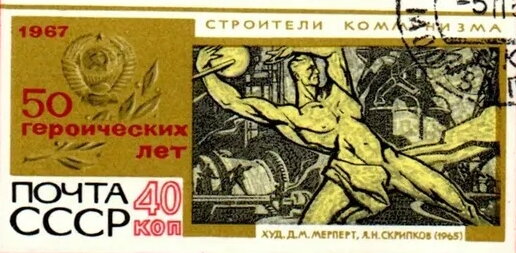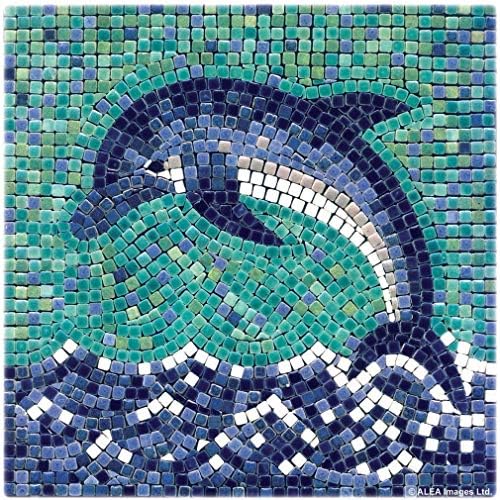Stamp: Builders of Communism, D.M. Merpert & Ya.N. Skripkov (1965) (Soviet Union, USSR 1967)
Builders of Communism, D.M. Merpert & Ya.N. Skripkov (1965) (Soviet Union, USSR 1967)
05 November (Soviet Union, USSR ) within release 50th Anniversary of Great October Revolution (2nd issue) goes into circulation Stamp Builders of Communism, D.M. Merpert & Ya.N. Skripkov (1965) face value 40 Russian kopek
| Stamp Builders of Communism, D.M. Merpert & Ya.N. Skripkov (1965) in catalogues | |
|---|---|
| Michel: | Mi: SU 3422 |
| Unificato: | Un: SU 3296B |
Stamp is horizontal format.
Stamp from souvenir sheet. Smaller than Sg:SU 3482 and imperforate.Also in the issue 50th Anniversary of Great October Revolution (2nd issue):
- Stamp - Builders of Communism, D.M. Merpert & Ya.N. Skripkov (1965) face value 40;
- Stamp - Lenin Addressing Second Soviet Congress, V.A. Serov (1955) face value 40;
Stamp Builders of Communism, D.M. Merpert & Ya.N. Skripkov (1965) it reflects the thematic directions:
An anniversary is the date on which an event took place or an institution was founded in a previous year, and may also refer to the commemoration or celebration of that event. For example, the first event is the initial occurrence or, if planned, the inaugural of the event. One year later would be the first anniversary of that event. The word was first used for Catholic feasts to commemorate saints. Most countries celebrate national anniversaries, typically called national days. These could be the date of independence of the nation or the adoption of a new constitution or form of government. The important dates in a sitting monarch's reign may also be commemorated, an event often referred to as a "Jubilee".
Art is a diverse range of human activities in creating visual, auditory or performing artifacts (artworks), expressing the author's imaginative or technical skill, intended to be appreciated for their beauty or emotional power. In their most general form these activities include the production of works of art, the criticism of art, the study of the history of art, and the aesthetic dissemination of art. The oldest documented forms of art are visual arts, which include creation of images or objects in fields including painting, sculpture, printmaking, photography, and other visual media. Architecture is often included as one of the visual arts; however, like the decorative arts, or advertising, it involves the creation of objects where the practical considerations of use are essential—in a way that they usually are not in a painting, for example. Music, theatre, film, dance, and other performing arts, as well as literature and other media such as interactive media, are included in a broader definition of art or the arts. Until the 17th century, art referred to any skill or mastery and was not differentiated from crafts or sciences. In modern usage after the 17th century, where aesthetic considerations are paramount, the fine arts are separated and distinguished from acquired skills in general, such as the decorative or applied arts.
A coat of arms is an heraldic visual design on an escutcheon (i.e. shield), surcoat, or tabard. The coat of arms on an escutcheon forms the central element of the full heraldic achievement which in its whole consists of shield, supporters, crest, and motto. A coat of arms is traditionally unique to an individual person, family (except in the United Kingdom), state, organisation or corporation.
Communism (from Latin communis, 'common, universal') is a left-wing to far-left sociopolitical, philosophical, and economic ideology within the socialist movement, whose goal is the creation of a communist society, a socioeconomic order centered around common ownership of the means of production, distribution, and exchange that allocates products to everyone in the society based on need. A communist society would entail the absence of private property and social classes, and ultimately moneyand the state (or nation state).
A mosaic is a pattern or image made of small regular or irregular pieces of colored stone, glass or ceramic, held in place by plaster/mortar, and covering a surface. Mosaics are often used as floor and wall decoration, and were particularly popular in the Ancient Roman world.





